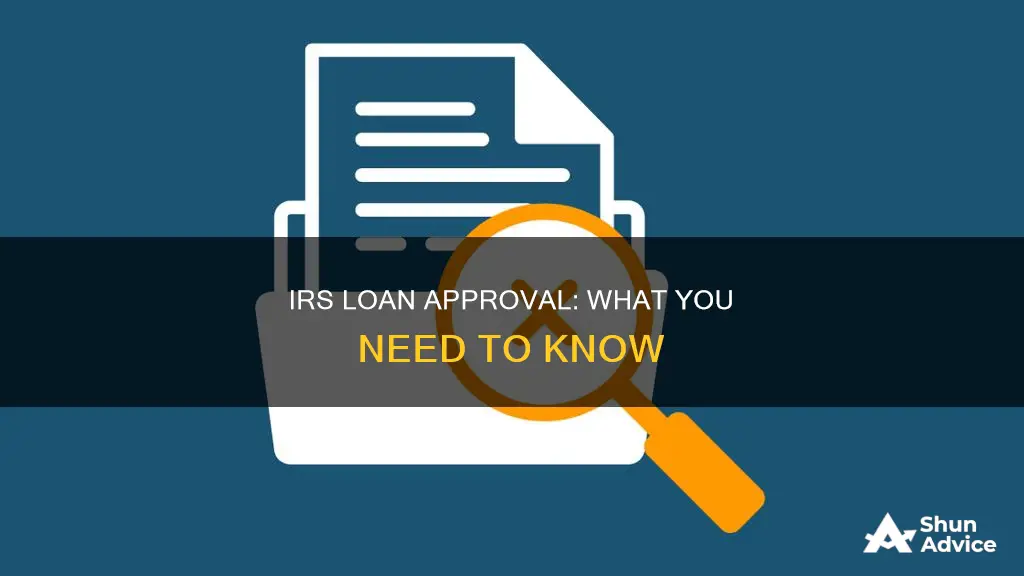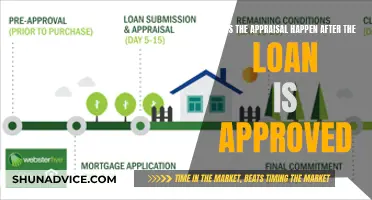
The Internal Revenue Service (IRS) offers several options for taxpayers who need help paying their tax bills. These include short-term and long-term payment plans, also known as instalment agreements, which are essentially agreements with the IRS to pay taxes within an extended timeframe. The IRS also offers an Offer in Compromise program, which allows taxpayers to settle their tax debt for less than the full amount owed. Additionally, retirement plans may offer loans to participants, although this is not a requirement.
| Characteristics | Values |
|---|---|
| Payment plans | The IRS may approve a long-term payment plan, also known as an installment agreement, for which a setup fee is charged. |
| Payment options | Taxpayers can pay by Direct Debit, debit/credit card, or online. |
| Late payment | If you can't pay your taxes on time, you should still file your tax return and pay as much as you can to minimize interest and penalties. |
| Late payment penalty | The late payment penalty accrues at a rate of 0.25% per month, up to 1% per month. |
| Low-income taxpayers | Low-income taxpayers may qualify for a waiver or reimbursement of the setup fee for a payment plan. |
| Offer in Compromise | An Offer in Compromise allows you to settle your tax debt for less than the full amount. It is an option if you can't pay your full tax liability or if doing so would create a financial hardship. |
| First Time Abatement program | The IRS can provide relief under the First Time Abatement program for taxpayers with a history of compliance. |
| Retirement plans | Retirement plans may offer loans to participants, but it is not a requirement. |

Retirement plans
If you are considering taking a loan from your retirement account, it is recommended that you consult with a financial planner to determine if this is the best option for you. You should receive information from the plan administrator describing the availability of and terms for obtaining a loan, including the application process and repayment terms. The maximum amount you may borrow from your plan is 50% of your vested account balance or $50,000, whichever is less. An exception to this limit is if 50% of the vested account balance is less than $10,000, in which case you may borrow up to $10,000.
It is important to note that if you do not repay the loan, including interest, according to the loan's terms, any unpaid amounts become a plan distribution to you. Your plan may require you to repay the full outstanding balance if you terminate your employment or if the plan is terminated. If you are unable to repay the loan, your employer will treat it as a distribution and report it to the IRS on Form 1099-R. You can avoid immediate income tax consequences by rolling over all or part of the loan's outstanding balance to an IRA or eligible retirement plan by the due date for filing your Federal income tax return for the year in which the loan is treated as a distribution. Loans that exceed the maximum amount or do not follow the required repayment schedule are considered "deemed distributions" and may be subject to income tax and an early distribution tax of 10%.
Additionally, if you are an employee in the armed forces, your employer may suspend loan repayments during your period of active duty and extend the loan repayment period accordingly. If, during a leave of absence, your salary is reduced to the point where it is insufficient to repay the loan, your employer may suspend repayment for up to a year. However, the loan repayment period is typically not extended in this case, and you may be required to increase your scheduled payment amounts to pay off the loan within the originally scheduled period.
It is worth noting that retirement plans have specific rules regarding prohibited transactions under IRC Section 4975. Loans to disqualified persons, such as 50% owners, fiduciaries, and service providers, must meet certain requirements to avoid being considered prohibited transactions. These requirements include offering loans to all participants or beneficiaries, using specific provisions, and providing reasonable interest rates.
The Fed's Lending Power: Individual Access Explored
You may want to see also

Payment plans
If you are unable to pay your taxes in full by the original filing due date, you can request a payment plan or instalment agreement with the IRS. This allows you to pay your taxes within an extended time frame. There are short-term and long-term payment plans available.
Short-term payment plans do not incur a user fee. However, if you do not pay your taxes on time, you may face a Notice of Federal Tax Lien and/or an IRS levy action. When you request a short-term payment plan, the IRS is generally prohibited from levying, and the time to collect is suspended or prolonged while the agreement is pending.
If the IRS approves a long-term payment plan, a setup fee normally applies, although low-income taxpayers may qualify for a waiver or reimbursement. Payments are made monthly, and the amount owed must be less than $50,000 in combined tax, penalties, and interest. The late payment penalty accrues at the rate of 0.25% per month, instead of up to 1% per month.
You can apply for a payment plan online, by phone, or by mail. If you apply online, you can use the Online Payment Agreement tool to make any desired changes to your current plan type, payment date, and amount. If you are unable to make the minimum required payment amount, you will be directed to complete a Form 433-H, Installment Agreement Request and Collection Information Statement.
If you are unable to pay your full tax liability, you may be able to settle your tax debt for less than the full amount you owe through an Offer in Compromise. To be approved, the amount offered should represent the most the IRS can expect to collect within a reasonable period. You must have filed all required tax returns and made all required estimated payments.
Loan Discrimination: Are Consumers Protected?
You may want to see also

Installment agreements
If you are unable to pay your taxes in full, you should pay as much as you can and then consider the IRS's online payment options. A payment plan is an agreement with the IRS to pay the taxes you owe within an extended timeframe. You should request a payment plan if you believe you will be able to pay your taxes in full within the extended time frame.
If you qualify for a short-term payment plan, you will not be liable for a user fee. Not paying your taxes when they are due may cause the filing of a Notice of Federal Tax Lien and/or an IRS levy action. When you request a payment plan (installment agreement), with certain exceptions, the IRS is generally prohibited from levying and the IRS’s time to collect is suspended or prolonged while an Installment Agreement (IA) is pending. An IA request is often pending until it can be reviewed, and an IA is established, or the request is withdrawn or rejected. If the requested IA is rejected, the running of the collection period is suspended for 30 days. Similarly, if you default on your IA payments and the IRS proposes to terminate the IA, the running of the collection period is suspended for 30 days.
You can apply for a payment plan (installment agreement) online through the Online Payment Agreement tool or apply by phone or by mail by submitting Form 9465, Installment Agreement Request. If you are a qualified taxpayer or authorized representative (power of attorney), you can apply for a payment plan (including installment agreement) online to pay off your balance over time. If your new monthly payment amount does not meet the requirements, you will be prompted to revise the payment amount. If you are unable to make the minimum required payment amount, you will receive directions for completing a Form 433-H, Installment Agreement Request and Collection Information Statement PDF, Form 433-F, Collection Information Statement or Form 433-B, Collection Information Statement for Businesses PDF and how to submit it.
If your plan has lapsed through default and is being reinstated, you may incur a reinstatement fee. Interest and some penalty charges continue to be added to the amount you owe until the balance is paid in full. The Office of Management and Budget has directed federal agencies to charge user fees for services such as the Installment Agreement program. The IRS utilizes the user fees to cover the cost of processing installment agreements. Waiver or reimbursement of the user fees only applies to individual taxpayers with adjusted gross income, as determined for the most recent year for which such information is available, at or below 250% of the applicable federal poverty level (low-income taxpayers) that enter into long-term payment plans (installment agreements). If you are a low-income taxpayer, the user fee is waived if you agree to make electronic debit payments by entering into a Direct Debit Installment Agreement (DDIA).
FDIC-Insured Savings and Loans: Are Your Finances Protected?
You may want to see also

Tax debt
If you are unable to pay your taxes, the IRS offers several options to help you settle your tax debt. Firstly, it is important to understand your IRS notice or letter, and to file past due tax returns. You should also be aware of your rights and protections as a taxpayer, which are outlined in the Taxpayer Bill of Rights.
If you are unable to pay your tax bill in full, you should pay as much as you can to reduce the accrual of interest and penalties on your account. You can then apply for a payment plan, also known as an instalment or online payment agreement, to pay off the remaining balance over time. There is no fee for this short-term payment plan, and individuals may be able to set one up by using the Online Payment Agreement application or by calling the IRS. However, interest and any applicable penalties will continue to accrue until the liability is paid in full.
If you are unable to make any payment at all, you should call the number on your notice or 800-829-1040 (for individuals) or 800-829-4933 (for businesses) for assistance. You may be offered a call-back option so that you do not have to wait on hold. You can also get in-person help at an IRS Taxpayer Assistance Center or at a Low-Income Taxpayer Clinic. If payment would prevent you from meeting your basic living expenses, you can request that the IRS delay collection until your financial condition improves. In this case, the IRS may report your account as currently not collectible, but your debt will continue to accrue interest and penalties until it is paid in full.
If you have a history of compliance, the IRS can typically provide relief under the First Time Abatement program. Some taxpayers may also qualify to settle their tax bill for less than the full amount due through an Offer in Compromise. There is a $205 non-refundable application fee for this, although it is generally waived for individual low-income taxpayers.
You could also consider taking out a loan to pay your tax debt. For example, you could take out a home equity loan or line of credit, or a personal loan. However, it is important to note that borrowing money to pay taxes may not be the best option for everyone, as it can be expensive and may carry a higher interest rate.
The Fed's Role: Providing Loans or Not?
You may want to see also

Loan provisions
The Internal Revenue Service (IRS) does not approve loans per se, but it does offer payment plans for taxpayers who are unable to pay their taxes in full by the original filing due date. These payment plans, also known as instalment agreements, allow taxpayers to pay their taxes within an extended timeframe. There are short-term and long-term payment plans available, and the IRS charges setup fees for these plans, which are normally waived for low-income taxpayers.
If a taxpayer is unable to pay their taxes in full, they are advised to file their tax return on time and pay as much as they can to help reduce penalties and interest. The IRS may assess penalties for both failing to file a tax return and failing to pay taxes by the deadline. The total amount owed will increase due to penalties and interest accruing until the taxpayer pays in full. However, some taxpayers may qualify for reduced or eliminated late-filing or late-payment penalties based on reasonable cause or a history of compliance.
For those who cannot pay their tax bill in full, there is also the option of an Offer in Compromise, which allows taxpayers to settle their tax debt for less than the full amount owed. This option is typically considered when paying the full amount would create a financial hardship. The IRS generally approves an Offer in Compromise when the offered amount represents the most they can expect to collect within a reasonable period. To apply, taxpayers must submit Form 433-A (OIC) for individuals or Form 433-B (OIC) for businesses, along with the required documentation and an initial payment.
Retirement plans may also offer loans to participants, but it is not mandatory for plan sponsors to include loan provisions. Various types of plans, such as profit-sharing, money purchase, 401(k), 403(b), and 457(b) plans, may offer loans. The maximum amount that a participant can borrow is generally 50% of their vested account balance or $50,000, whichever is less. However, if 50% of the vested account balance is less than $10,000, the participant may borrow up to $10,000. It is important to note that IRAs and IRA-based plans are not permitted to offer participant loans as it would result in a prohibited transaction.
The Fed's Role: Buying and Selling Loans
You may want to see also
Frequently asked questions
You should still file your tax return on time and pay as much as you can. This will help reduce penalties and interest. If you can't pay your full bill, you have other options, such as requesting a payment plan or an Offer in Compromise.
An Offer in Compromise allows you to settle your tax debt for less than the full amount you owe. It may be an option if you can't pay your full tax liability or doing so would create a financial hardship. The IRS considers your unique set of facts and circumstances and generally approves an offer when the amount offered represents the most they can expect to collect within a reasonable period.
You may be able to take out more than one loan from your retirement plan at a time, but only if your plan's terms allow it. The new loan, plus the outstanding balance of all other loans, cannot exceed the lesser of $50,000 or the greater of $10,000 or half of your vested account balance.







